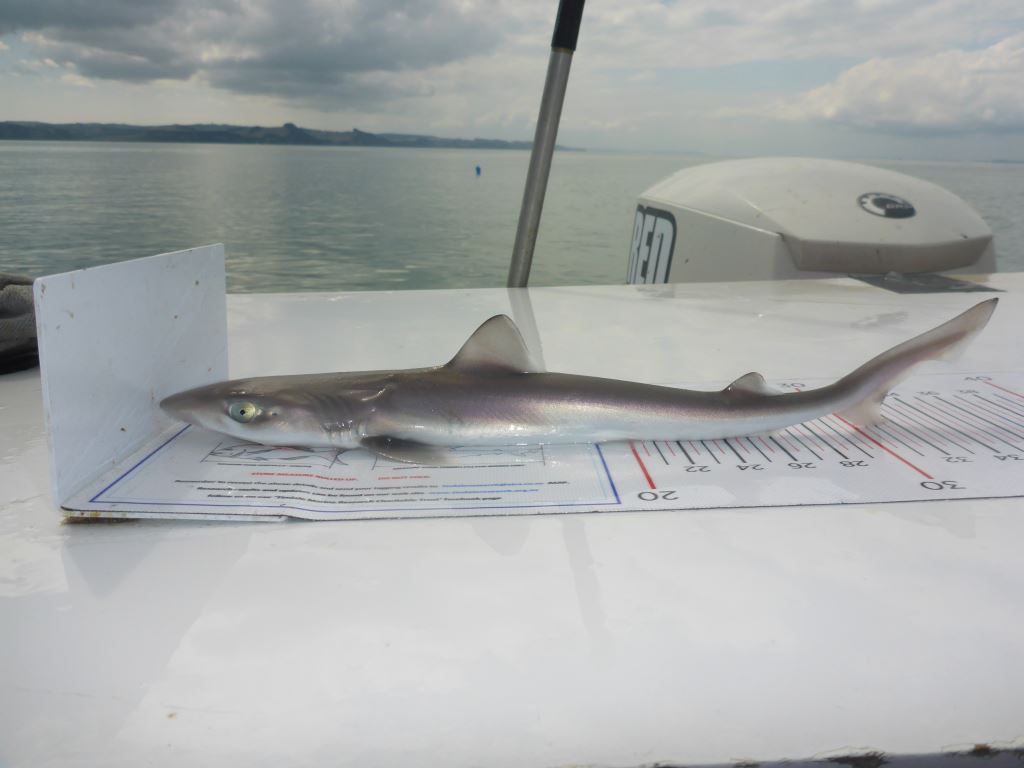This summer a series of human-shark interactions around the New Zealand coastline, including within the Hauraki Gulf Marine Park / Tīkapa Moana / Te Moananui-ō-Toi, has no doubt led to many of us wondering whether sharks are really as endangered as we are told.
As an apex predator, sharks keep the populations of their prey species in check by picking off the weak and vulnerable. In the scientific world, they are known as a ‘keystone species’ meaning that they are an essential component of a healthy, functioning marine ecosystem. If their populations decline or are completed wiped out, this causes a trophic cascade (a domino of negative effects on the rest of the food chain). The latest global research, which includes data from New Zealand, indicates that there has been a 71% decline in oceanic sharks and rays between 1970 and 2018.
In the Hauraki Gulf Marine Park, over 73 species of inshore and offshore chondrichthyans (that’s sharks/mangō, rays and chimaeras) have been recorded. These range from the small 76cm carpet shark to the massive 18m whale shark and the many species in between such as bronze whalers, smooth hammerheads, makos, blues, threshers and great whites. There are even records of basking sharks here once upon a time.
Whilst we know from some research, anecdotal evidence and tourism operator databases that these sharks can be seen in the Marine Park year-round, the number of sightings as well as the diversity of species increase during the Summer months. This seasonal peak in sightings doesn’t necessarily translate to an overall increase in population sizes however and is more likely attributed to other factors. For example:
- Summer is the peak shark breeding season with the adult females coming closer to shore to bear their offspring
- The warmer sea temperatures and changes in local currents likely affect their prey distribution both spatially and temporally
- The East Auckland Current comes closer to the coast which brings warmer water and tropical species like tiger sharks, whale sharks, manta rays and devil rays

Along with the natural behaviour and ecology of these animals and the marine ecosystem they live in, consideration should also be given to how humans likely have a large part to play in the increase in sightings. The better weather means that we tend to flock to the beaches to relish in the sunshine and boat owners head onto the Marine Park more often and for longer periods of time. This combined with the accessibility, power and increasing popularity of social media to easily share photographs and reports on our personal pages and in social media groups can also contribute to a perceived increase in shark numbers.
So, whilst there is a great diversity of shark species here, research shows that there has actually been an estimated 86% decline in the number of sharks in our waters. Therefore it is more likely that we are seeing fewer sharks, particularly whilst there is minimal marine protection in place.
In order to effectively protect areas of the Marine Park, there needs to be a good understanding of the ecosystem and the species that are found within it. With regards to sharks, there has so far been limited research conducted to specifically understand shark distribution and movements here and as a consequence, we do not yet fully understand these populations.
However, there are some research programs that are currently collecting data in order to help our collective understanding of these enigmatic species and you can become involved with them!
- Manta Watch New Zealand are conducting research and collating public sightings reports of oceanic manta rays to find out if they are seasonal visitors or a distinct population within New Zealand waters.
- If you’re a keen recreational fisher, get in touch with The Tindale Marine Research Charitable Trust who run a fish tagging citizen science project to better understand where and when different fish (including shark) species travel.

- Submit shark sightings to the Department of Conservation’s Marine Conservation Section (sharks@doc.govt.nz) or to 0800 DOC HOT (0800 362 468).
Every individual sighting report or tag resighting, when collected over time results in a large amount of data that can be used to better understand the sharks that are present here and in turn, help more informed management and protection decisions to be made.





